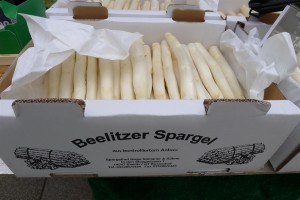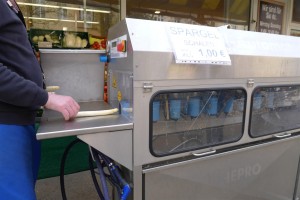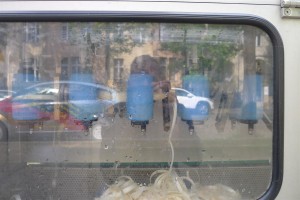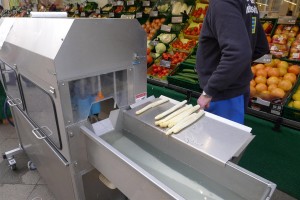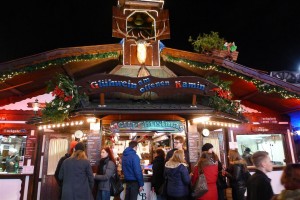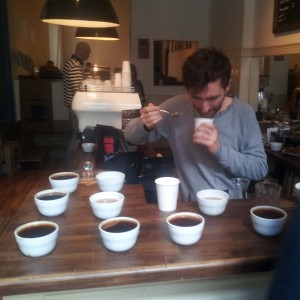We are in the midst of Spargelzeit — asparagus season — here in Germany. This asparagus is not the slim green variety that one typically finds in the US, but rather plump stalks of white asparagus. White asparagus is the same species as green, but it is cultivated differently. Soil is piled over the young shoots as they grow, and opaque tarps ensure that no light reaches the asparagus . In the absence of sunlight, photosynthesis does not occur, and the stalks become etiolated — they remain white.
Fans of white asparagus (every German I know) claim that it is less bitter and more tender than its green counterpart. The stalks also tend to be thicker, because the asparagus is allowed to grow longer. The downside to white asparagus is that the thick skin has to be peeled before it can be eaten. The peeling can be done at home with a vegetable peeler, but for €1.00, our local grocer will send a kilo of asparagus through this peeling machine:
I don’t think it took too many German machine engineers to come up with this contraption. It consists simply of pairs of rollers interspersed with fixed-blade vegetable peelers. Continue reading

